 When the worst that can happen actually happens. 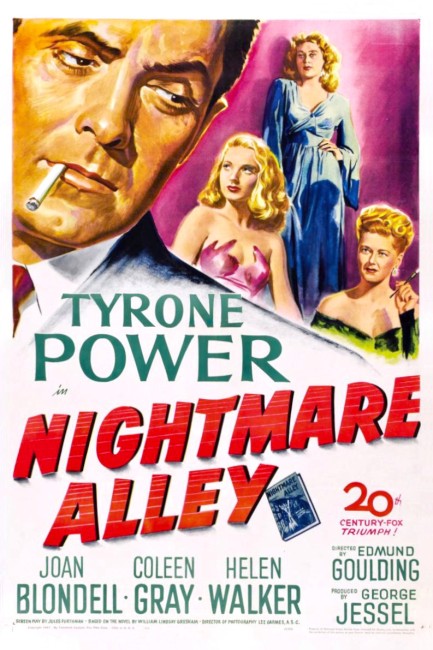
Nine years ago when we discussed Nightmare Alley we shared its West German poster, so we thought we'd circle back to the movie today, first because it was excellent, second because we wanted to share the U.S. poster, and third because Mexican auteur Guillermo del Toro remade it a couple of years ago, which made us think we needed to remind people there was a previous version. Well, here's the reminder: the original Nightmare Alley is one of the darkest films of the mid-century period. Tyrone Power is great in it, and Coleen Gray never hurts to have around, but what really makes the film worthwhile is that it's loaded with interesting subtext. If you want to know more about it, our previous write-up is here. Nightmare Alley premiered in the U.S. today in 1947.
 Everything that matters happens while the city sleeps. 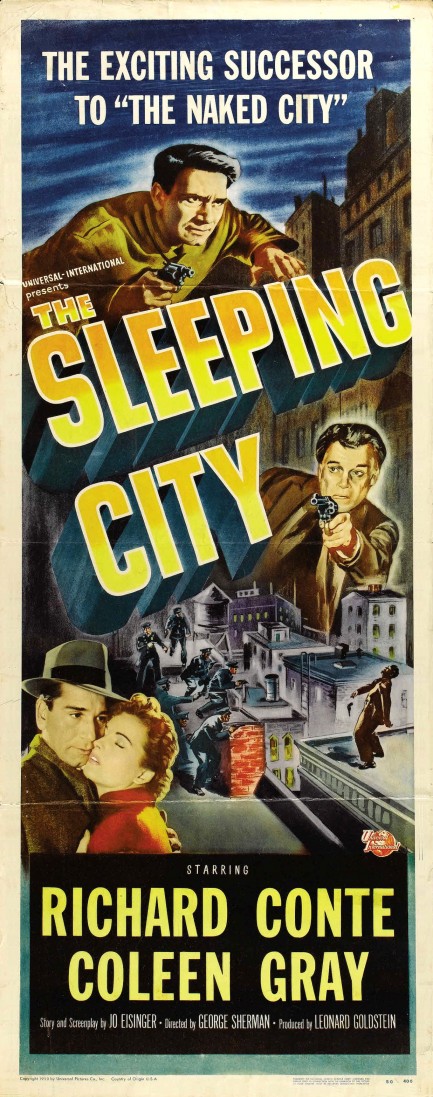
This poster for The Sleeping City says it's the exciting successor to The Naked City. That's a mighty bold claim, considering The Naked City was directed by the legendary Jules Dassin and was selected for permanent preservation by the U.S. Library of Congress's National Film Registry, while The Sleeping City was directed by the not-quite-legendary George Sherman, who mostly helmed westerns and received a Golden Boot Award for his contributions to the Western film genre. Both were skilled at their craft, no doubt. But there's a big difference between the National Film Registry and the Golden Boot.
The Sleeping City is a New York City based crime thriller, and it starts with a cheeseball introduction in which lead Richard Conte pays tribute to Bellevue Hospital and its doctors and nurses. It was tacked onto the finished picture after city officials learned that the public already viewed the hospital negatively, and a crime thriller set there might make those perceptions worse. But it was still a silly thing to do—Bellevue was a public hospital. It wasn't like it was going to lose ad revenue from bad publicity. In any case, we're glad these sorts of “the story you're about to see” preambles didn't last long in Hollywood.
Once the movie gets started, Conte plays a cop sent undercover to solve a murder at the hospital. He's posing as a doctor and has some medical experience, but is by all means to avoid being roped into a situation where he actually has to do any doctoring. If he gets in a jam of that sort he's supposed to sacrifice his cover, and as reliably as the turn of a script page, he gets trapped into treating a case of diabetic shock. He decides to forge ahead rather than step aside. One could ponder his ethics, but luckily he gets through by the skin of his teeth. Whew.
Conte sticks his long nose in various nooks and crannies around Bellevue, makes goo-goo eyes with ward nurse Coleen Gray, and finds himself roomed with a hothead doctor named Steve. The murder mystery eventually lands right in his lap when his roommate turns up dead—lucky break that—and an important clue is provided by a nurse played by Peggy “Wow*” Dow. We won't tell you how the plot unspools from that point. We'll just say The Sleeping City is a functional thriller worth a watch. With Conte and Gray on board, it's pretty hard to fail. The film premiered today in 1950.
*Not her official nickname. That's just how we think of her. 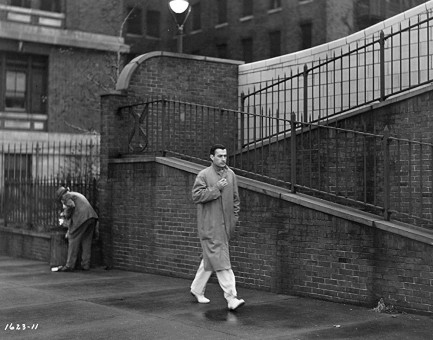 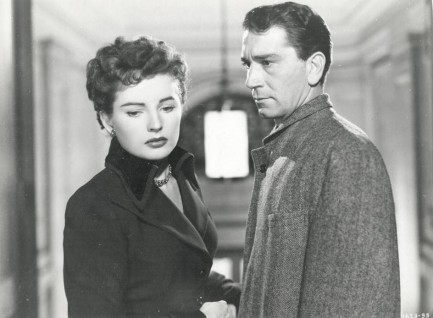 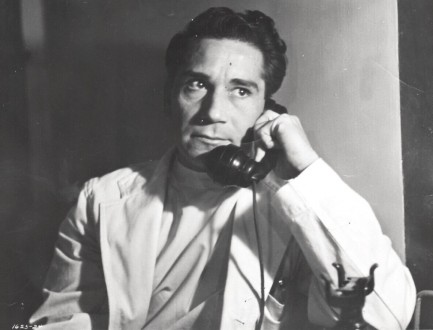 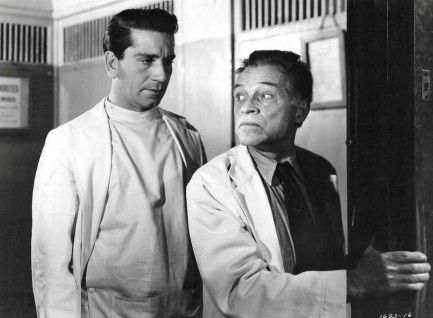 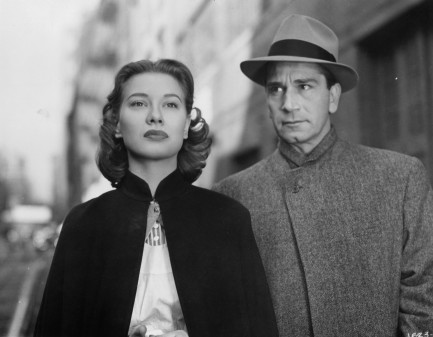 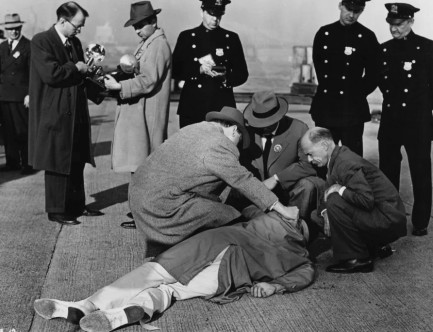 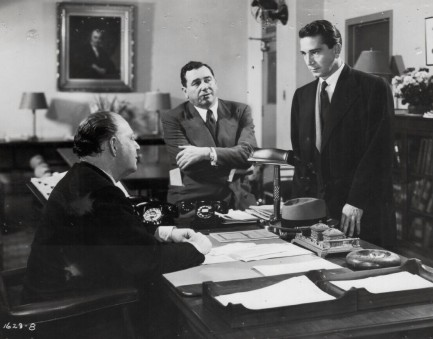 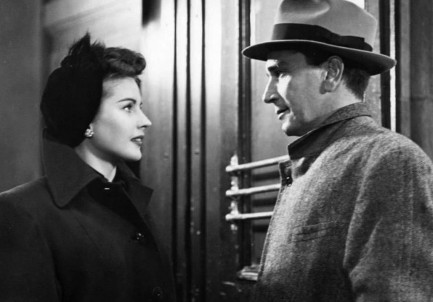 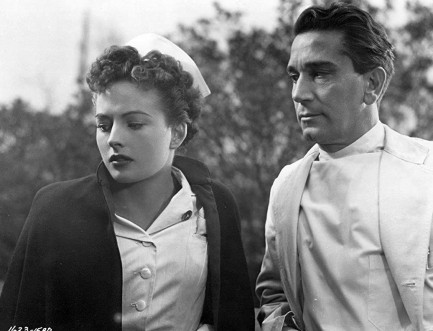 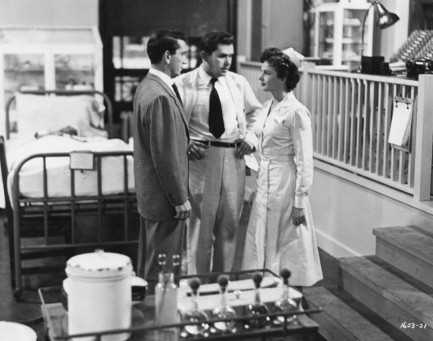 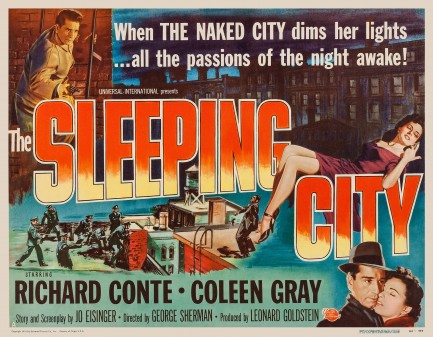 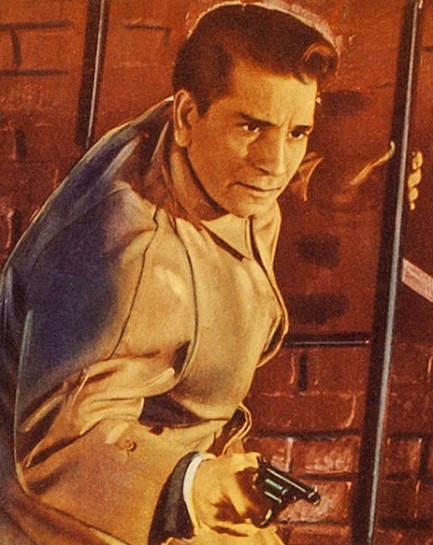
 Downtime always means pooltime in Hollywood. 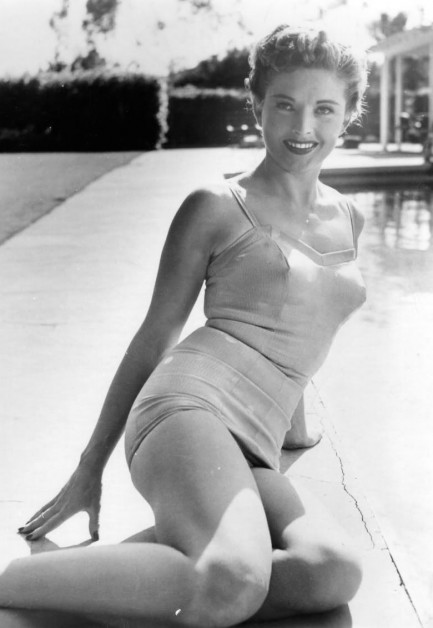
We like this shot of Coleen Gray, née Doris Bernice Jensen, with its casual day-off feel. Gray appeared in some very good movies, including Kiss of Death, The Killing, Kansas City Confidential, State Fair, and The Leech Woman (well, maybe that one's not so good, but it's really fun). All told, she amassed more than one hundred credits in cinema and on television. We obviously haven't seen them all, but our favorite role of hers is as Molly in Nightmare Alley. Interest in that one will pick up soon because it's being remade by Guillermo del Toro, with Willem Dafoe, Cate Blanchett, and Bradley Cooper in the leads. We can understand why a maestro of the weird like del Toro was attracted to that film, and we expect the remake to be very interesting. But do yourself a favor and watch the original sometime too.
 Maybe I should have listened to my parents and stayed in community college. 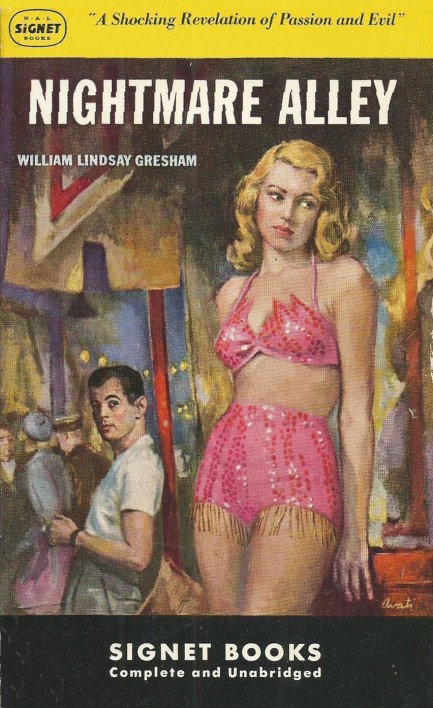
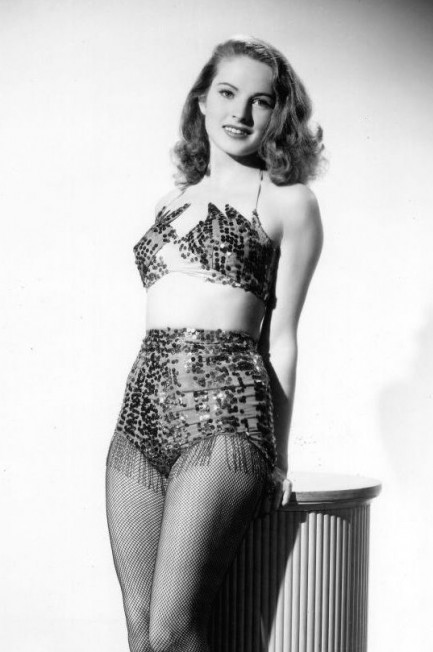 Above, a nice James Avati cover for Nightmare Alley by William Lindsay Gresham, copyright 1949. The hardback of this came out in 1946, and it was adapted to the big screen in 1947 with Tyrone Power in the lead role, so this art reflects the movie, which is why the cover femme looks like and is dressed like co-star Coleen Gray. This is one of many mid-century novels set in and around carnivals, and it's one of the better ones, we think. The film version adheres reasonably close to Gresham's original vision. We talked about it several years ago, so check here if you're interested. We've also talked about several other carnival books over the years and now we have an idea to put together a cover collection along those lines. We'll have to see if there are any examples left to find. But in the meantime you can see what we've already collected here, here, here, and here. Above, a nice James Avati cover for Nightmare Alley by William Lindsay Gresham, copyright 1949. The hardback of this came out in 1946, and it was adapted to the big screen in 1947 with Tyrone Power in the lead role, so this art reflects the movie, which is why the cover femme looks like and is dressed like co-star Coleen Gray. This is one of many mid-century novels set in and around carnivals, and it's one of the better ones, we think. The film version adheres reasonably close to Gresham's original vision. We talked about it several years ago, so check here if you're interested. We've also talked about several other carnival books over the years and now we have an idea to put together a cover collection along those lines. We'll have to see if there are any examples left to find. But in the meantime you can see what we've already collected here, here, here, and here.
 Making a killing at the track is harder than they think. 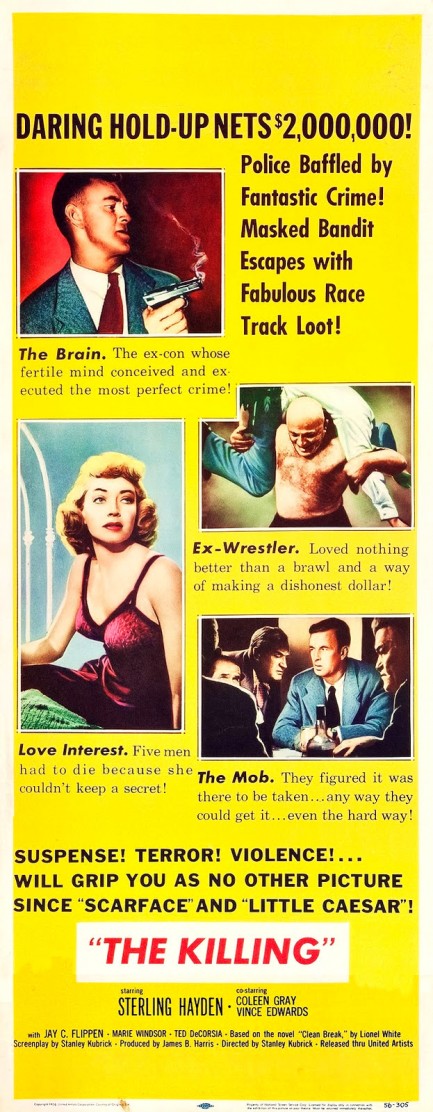
Tonight the Noir City Film Festival is also screening Stanley Kubrick's 1956 crime procedural The Killing. The title refers not to murder but to making a killing—i.e. a highly profitable score. Sterling Hayden leads a cast that includes Coleen Gray, Elisha Cook, Jr., and Marie Windsor. Hayden and crew hope to rob a race track, and to do this they lay out a precise plan that includes causing a brawl at the track bar as one distraction, and shooting a horse mid-race as another. What could go wrong, right? But the crazy plan makes sense, and if you have trouble following it a stentorian narration breaks down the action for you. We didn't mind that so much—the entire premise of the movie is that it's a faux-documentary, so the voiceover is something you have to accept. But the trumpets and tympani on the soundtrack—wow—are way overcooked. Still, this is a nice piece of noir, occasionally running on parallel timelines, with plenty of directorial style from a twenty-eight-year-old Kubrick. Some might take issue with the film's heavyhanded irony, but it's all somewhat redeemed by the perfection with which Hayden delivers his final line. The Killing didn't do well at the box office, however as often happens with films from directors who later become icons, opinions have shifted over the decades. But even if modern day critics are in agreement that The Killing is a top effort, it still won't be everyone's cup of tea. You'll just have to judge for yourself.
 The best defense is a good offense. 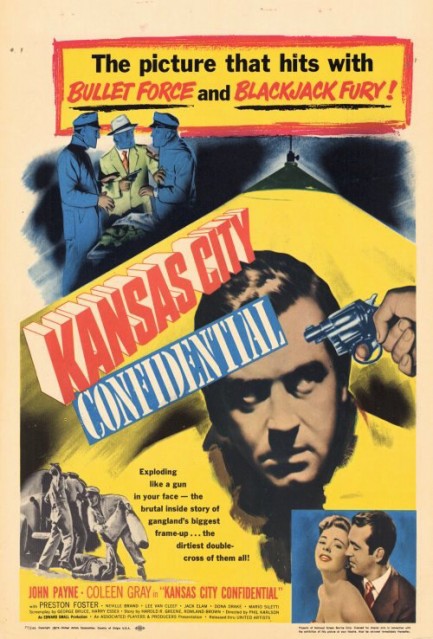
Four robbers knock off a bank in Kansas City with plans to split the money after the heat has cooled. The mastermind behind the job has arranged it so the crooks don't meet before the job, and wear masks during it, thus can't possibly identify each other. But each man has an ace, torn in half to create a unique mate, to match with the second half and confirm his identity when the time comes. It all sounds clever and foolproof, except the mastermind has framed someone for the robbery to throw police off their trail, and when this man is arrested but turned loose from police custody due to lack of evidence, he decides to track down the men who set him up.
This character, played by John Payne, is our anti-hero and looming wrench in theives' works. He quickly picks up the trail of one of the robbers in Mexico, but the police have too. In trying to discover who framed him, Payne could look to these lurking cops as though he's a member of the gang—if they spot him, that is. When Payne sees an opportunity to adopt one of the robber's identities—no difficult task since they've never seen each other—he leaps at it, but this draws him in even deeper. He's now in danger from the men he's playing imposter to, while to the cops he looks like a participant in the robbery.
There are more twists, including a star-crossed romance with Coleen Gray, but we'll stop there. This is a nice, multi-layered film noir, with good performances all around. Considering the risk Payne has to take we aren't sure we fully buy his motivation, but once he's made the decision there's no easy way out, and it's fun to watch him threaten and beat his way up the chain to the top guy. Coleen Gray always adds a nice element to any movie she's in, and Lee Van Cleef is good in a tough guy role. The only serious blemish here may be the silly final minute, but you shouldn't let it ruin the film for you. We recommend giving this one a whirl. 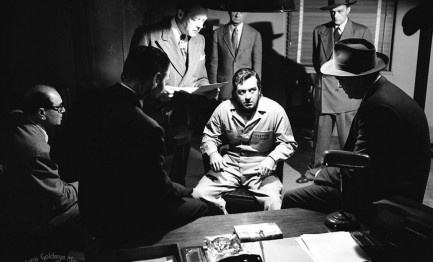
 Have you ever had a terrible dream and couldn’t wake up? 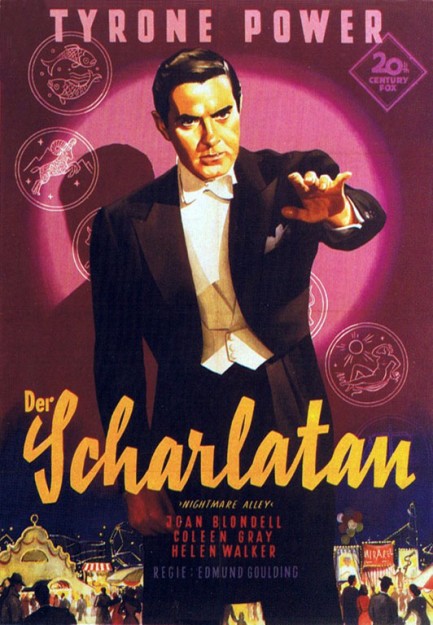
This West German poster for Der Scharlatan, aka Nightmare Alley shows Twentieth Century Fox pretty boy Tyrone Power in his role as The Great Stanton, a conniving psychic. Power felt constricted by the romance and adventure parts he’d played up to that point, so he bought the rights to William Lindsay Gresham’s novel and dirtied himself up. He plays a lowly carnival barker who realizes that an ingenious verbal code is the key to reaching the heights of fame. This code allows a seer to work in tandem with an assistant to correctly answer the questions of spectators. “I’m sensing that there’s a Mr. Abernathy here and he’s... wait… it’s coming… Sir, you’re concerned about your wife’s health. Isn’t that right? Well let me tell you, you’ll get good news from the doctor tomorrow!” Though the code’s owners aren’t using it, they plan to sell it to fund their retirement, and that looks to be some years off. This forces Power to either to steal it or sweet talk his way into it. As it turns out, he doesn’t have to do either, but once he has the code and has built an act around it, the fame and riches it brings fail to quench his greed.
Nightmare Alley was not warmly reviewed upon release, but many of those reviews simply found the movie too gritty. Such criticisms tend to make their authors look out of touch. For example, Bosley Crowther was demoted from his position as the New York Times’ main critic in large part for slamming Bonnie and Clyde in three separate articles, despite the film’s obvious quality. Nightmare Alley had similar detractors—it was just too downbeat for some, even for a film noir. But within its fictional milieu it's highly successful. Our world has every kind of depravity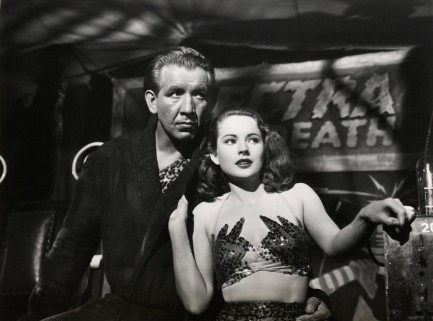 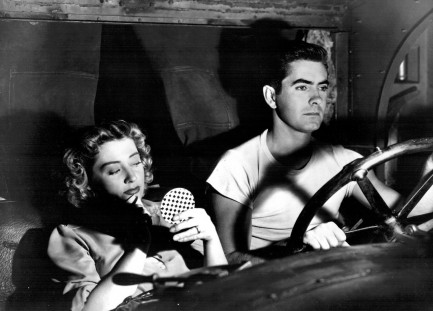 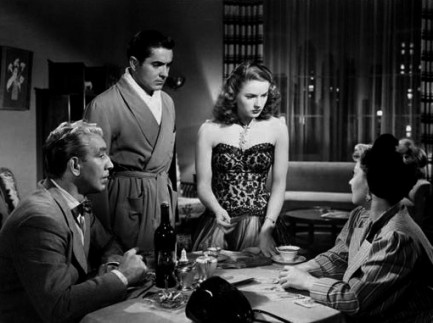 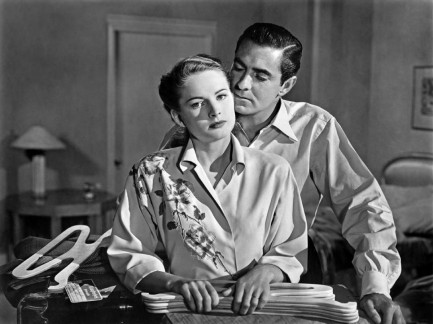 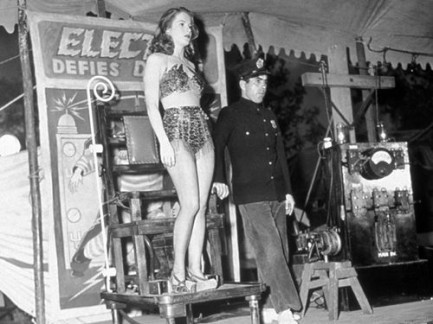 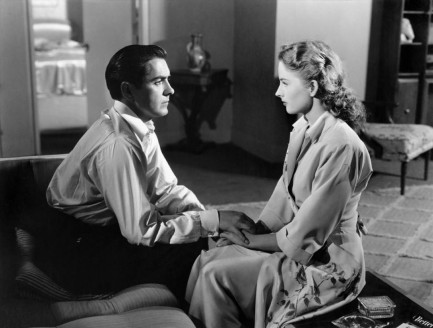 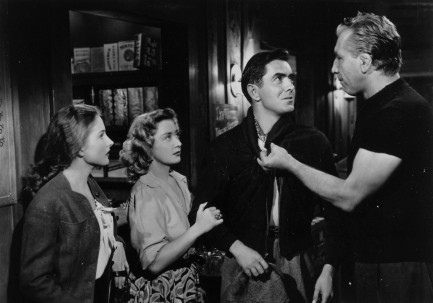 and cruelty, and movies that depict them must be judged on their own terms. So ignore the haters—Nightmare Alley is excellent. Power puts on an award-worthy performance, and Joan Blondell and Coleen Gray are great in support. There’s a pivotal moment in the film when it seems possible Power’s character has some actual psychic ability. Too bad he can’t see his own future. Nightmare Alley premiered in 1947, and finally made its way to West Germany today in 1954. and cruelty, and movies that depict them must be judged on their own terms. So ignore the haters—Nightmare Alley is excellent. Power puts on an award-worthy performance, and Joan Blondell and Coleen Gray are great in support. There’s a pivotal moment in the film when it seems possible Power’s character has some actual psychic ability. Too bad he can’t see his own future. Nightmare Alley premiered in 1947, and finally made its way to West Germany today in 1954.
|
 |

The headlines that mattered yesteryear.
2003—Hope Dies
Film legend Bob Hope dies of pneumonia two months after celebrating his 100th birthday. 1945—Churchill Given the Sack
In spite of admiring Winston Churchill as a great wartime leader, Britons elect
Clement Attlee the nation's new prime minister in a sweeping victory for the Labour Party over the Conservatives. 1952—Evita Peron Dies
Eva Duarte de Peron, aka Evita, wife of the president of the Argentine Republic, dies from cancer at age 33. Evita had brought the working classes into a position of political power never witnessed before, but was hated by the nation's powerful military class. She is lain to rest in Milan, Italy in a secret grave under a nun's name, but is eventually returned to Argentina for reburial beside her husband in 1974. 1943—Mussolini Calls It Quits
Italian dictator Benito Mussolini steps down as head of the armed forces and the government. It soon becomes clear that Il Duce did not relinquish power voluntarily, but was forced to resign after former Fascist colleagues turned against him. He is later installed by Germany as leader of the Italian Social Republic in the north of the country, but is killed by partisans in 1945.
|

|
|

It's easy. We have an uploader that makes it a snap. Use it to submit your art, text, header, and subhead. Your post can be funny, serious, or anything in between, as long as it's vintage pulp. You'll get a byline and experience the fleeting pride of free authorship. We'll edit your post for typos, but the rest is up to you. Click here to give us your best shot.

|
|



















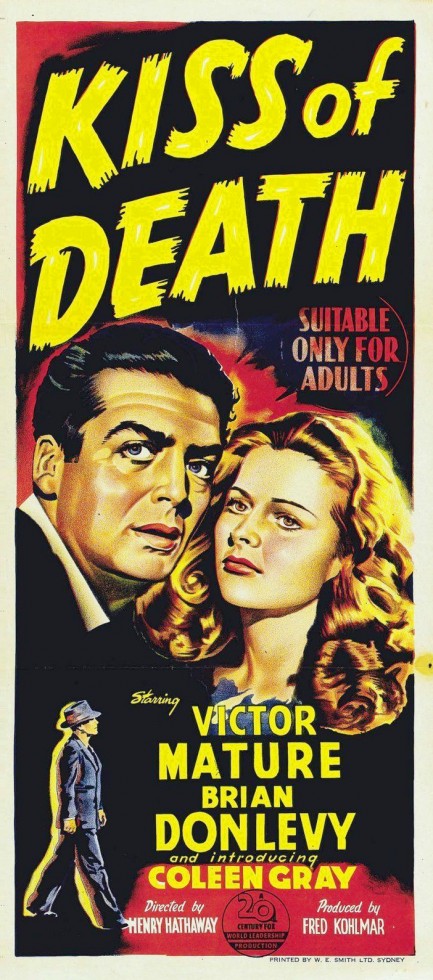
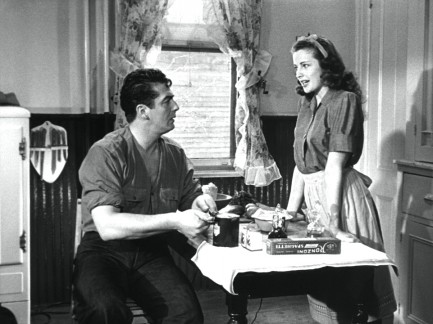
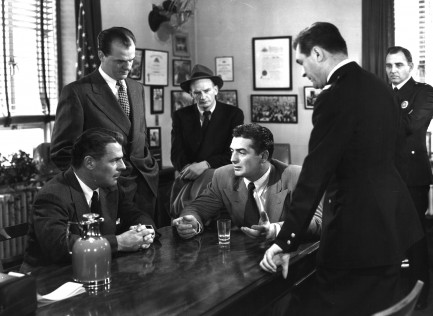
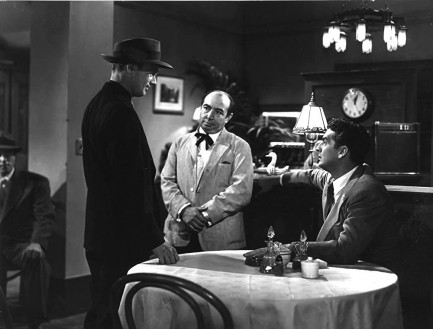
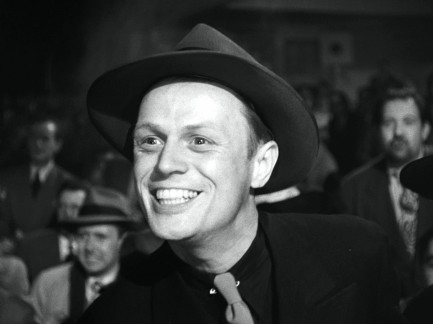
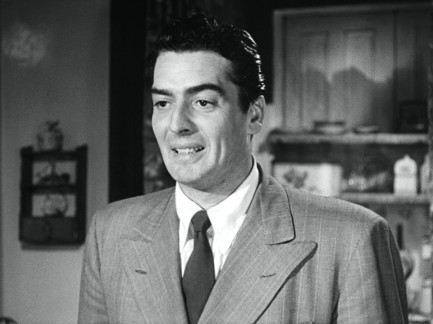
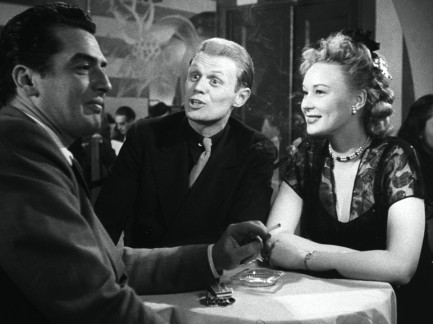
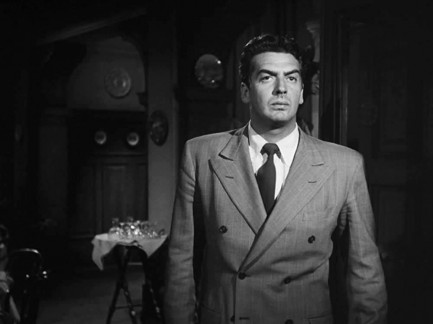
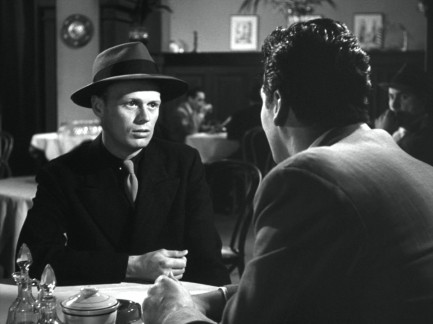
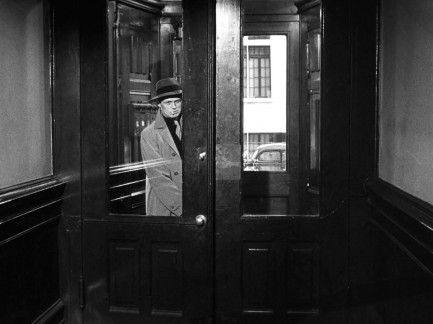
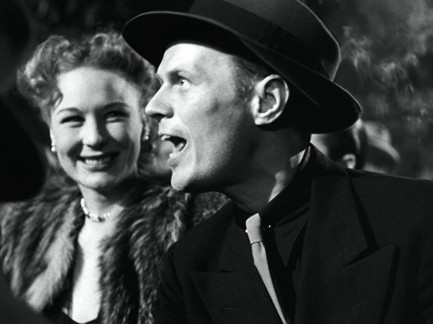
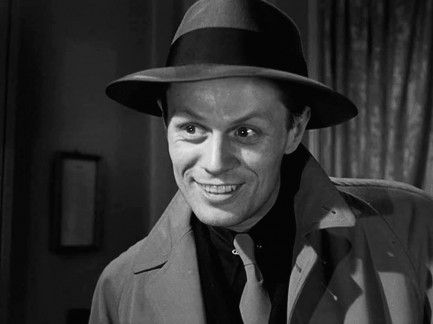
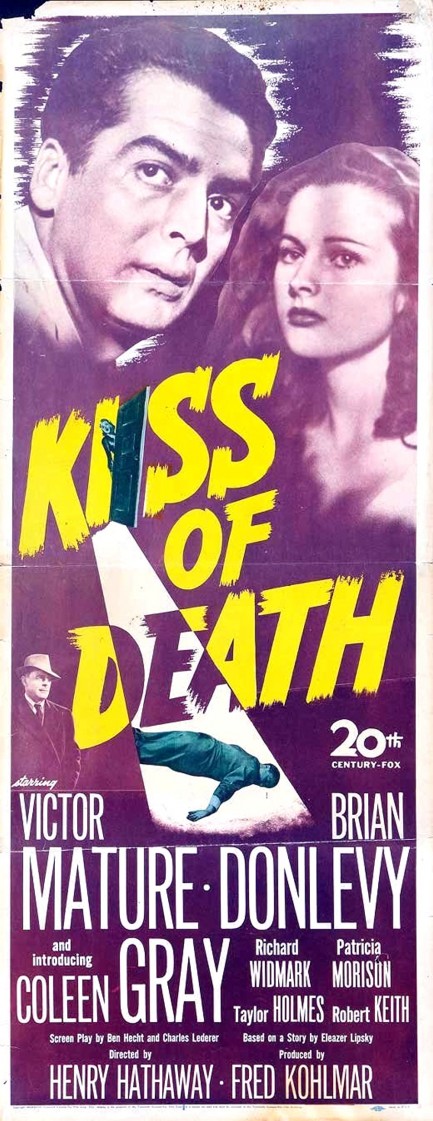


 Above, a nice James Avati cover for Nightmare Alley by William Lindsay Gresham, copyright 1949. The hardback of this came out in 1946, and it was adapted to the big screen in 1947 with Tyrone Power in the lead role, so this art reflects the movie, which is why the cover femme looks like and is dressed like co-star Coleen Gray. This is one of many mid-century novels set in and around carnivals, and it's one of the better ones, we think. The film version adheres reasonably close to Gresham's original vision. We talked about it several years ago, so check here if you're interested. We've also talked about several other carnival books over the years and now we have an idea to put together a cover collection along those lines. We'll have to see if there are any examples left to find. But in the meantime you can see what we've already collected here, here, here, and here.
Above, a nice James Avati cover for Nightmare Alley by William Lindsay Gresham, copyright 1949. The hardback of this came out in 1946, and it was adapted to the big screen in 1947 with Tyrone Power in the lead role, so this art reflects the movie, which is why the cover femme looks like and is dressed like co-star Coleen Gray. This is one of many mid-century novels set in and around carnivals, and it's one of the better ones, we think. The film version adheres reasonably close to Gresham's original vision. We talked about it several years ago, so check here if you're interested. We've also talked about several other carnival books over the years and now we have an idea to put together a cover collection along those lines. We'll have to see if there are any examples left to find. But in the meantime you can see what we've already collected here, here, here, and here.












 and cruelty, and movies that depict them must be judged on their own terms. So ignore the haters—Nightmare Alley is excellent. Power puts on an award-worthy performance, and Joan Blondell and Coleen Gray are great in support. There’s a pivotal moment in the film when it seems possible Power’s character has some actual psychic ability. Too bad he can’t see his own future. Nightmare Alley premiered in 1947, and finally made its way to West Germany today in 1954.
and cruelty, and movies that depict them must be judged on their own terms. So ignore the haters—Nightmare Alley is excellent. Power puts on an award-worthy performance, and Joan Blondell and Coleen Gray are great in support. There’s a pivotal moment in the film when it seems possible Power’s character has some actual psychic ability. Too bad he can’t see his own future. Nightmare Alley premiered in 1947, and finally made its way to West Germany today in 1954. 



































































